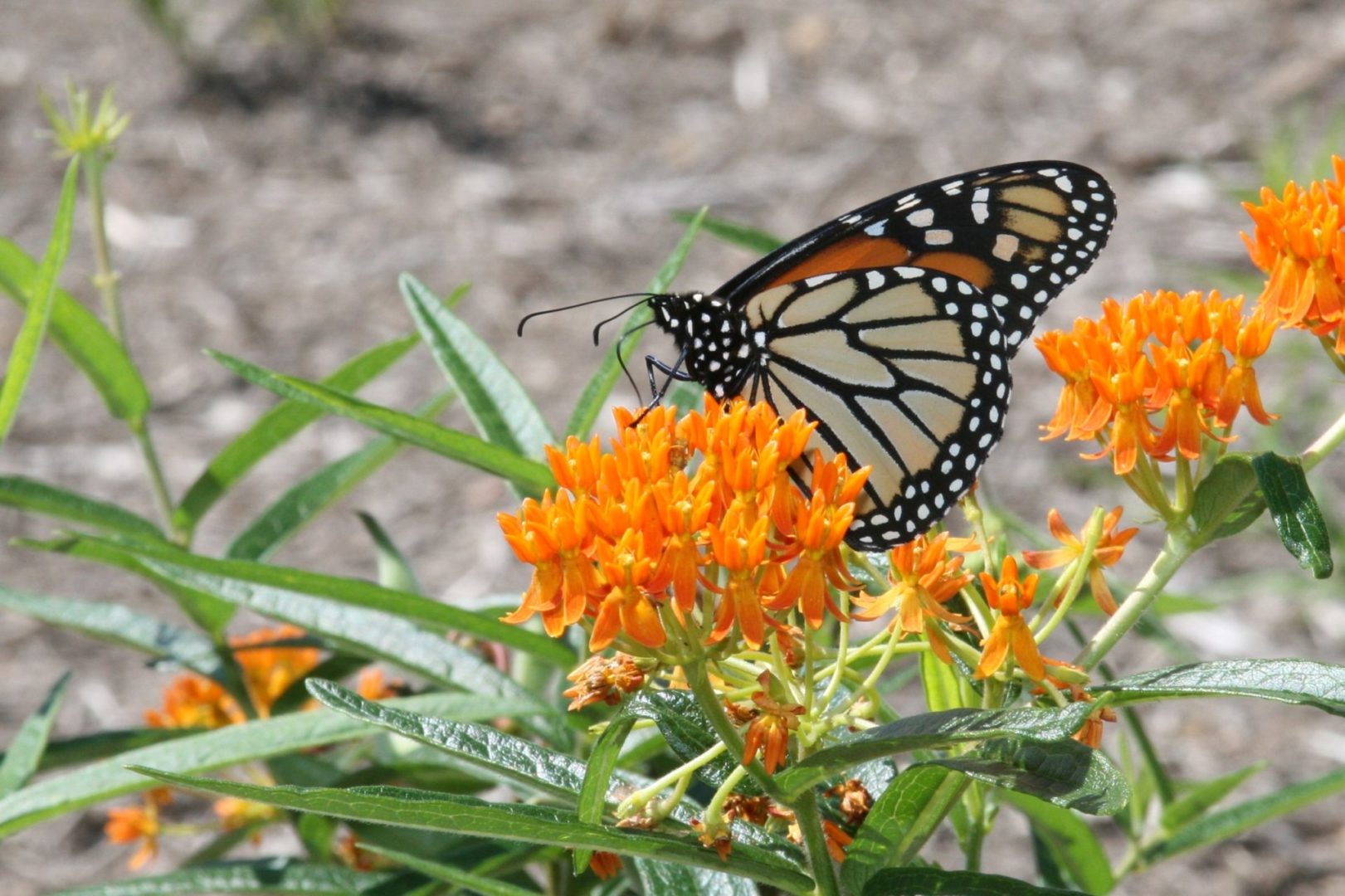
A MONARCH BUTTERFLY feeding on butterfly weed in Centre County.

A MONARCH BUTTERFLY feeding on butterfly weed in Centre County.
The rich orange flowers of butterfly weed (Asclepias tuberosa) seem to call out “here I am” to any passerby. This attractive flower is blooming now.
Butterfly weed is a big nectar producer and is therefore aptly named. The bright-colored blossoms of this native wildflower attract many species of butterflies to sip its nectar and sometimes pollinate the flowers. The plant attracts a broad variety of pollinators and a 1996 study shows it is more likely to be pollinated itself by bees and wasps, rather than butterflies.
The black-, yellow- and white-striped larvae of the monarch butterfly are also found eating its leaves. The larvae of queen butterflies, dogbane tiger moths and milkweed tussock moths also use butterfly weed as a host plant.
Butterfly weed, which grows from one to three feet tall, is a member of the milkweed family. Although it has the characteristic milkweed seed pods and fluffy wind-blown seeds, its sap is not white like that of the other members of this family. Butterfly weed most closely resembles swamp milkweed. Swamp milkweed has pink flowers, but the overall shape and size of their flower clusters are similar.
The hairy stem of butterfly weed supports as many as 50 two- to four-inch-long slender, dark green leaves that grow perpendicularly from its entire length. Flattopped clusters of 40 to 100 complex flowers grow at the branched top. Each odorless blossom is made up of five curved, downward-growing petals surrounding a central group of five more upward-facing petals. Reproductive parts are located inside the central crown.
Butterfly weed thrives in poor, well-drained soil. It is often found growing in old barren fields and on steep, dry roadside banks, living where little else seems to be able to survive. Its hardy nature may be due to the large taproot that supports this plant. The white root may be larger than a carrot and grows both vertically and horizontally.
Many locations in Centre County support butterfly weed. The southern half of Pennsylvania is generally home to this milkweed, but scattered populations can be found even in the northern tier counties. While this beautiful species is rare and protected in some states, it is abundant in much of the southern United States.
The large, deep taproot helps this plant thrive in hostile environments. However, it makes transplanting from the wild almost impossible. People who attempt to gather it from the wild usually end up killing the plant.
Like yarrow, bee balm and purple loosestrife, butterfly weed is also sold as an ornamental in several area garden centers. One popular variety is called Hello Yellow and has yellow blossoms instead of orange. Seeds can also be purchased online. If you decide to buy seeds or plants, look for or ask about the scientific name. Several other plants are also referred to as butterfly weed. If it is not Asclepias tuberosa, it is not the true native butterfly weed.
Select an area of well-drained, sandy soil for planting. Butterfly weed does not do well in clay soils. Butterfly weed needs full to partial sun.
Native Americans and early settlers used a paste made from this plant to treat sores. An extract made from the taproot was used to induce vomiting and to treat pleurisy.
Some older books even refer to this plant as pleurisy root. Butterfly weed is no longer recommended to treat anything, however, because it contains toxic cardiac glycosides. This toxin, which is stored by monarch caterpillars, helps to protect the larva and adult butterfly from predators. Although monarch caterpillars eat the leaves, it is not preferred over other species of milkweed, likely because of its rough leaves or the fact that the leaves have a lower level of the protective toxins.
Use a good field guide as an aid to identifying most Pennsylvania wildflowers. My copy of the “Peterson Field Guide to Wildflowers of Northeastern/ North-central North America” even has a photo of butterfly weed on its cover.
Mark Nale writes about the outdoors for The Centre County Gazette.
Receive all the latest news and events right to your inbox.

80% of consumers turn to directories with reviews to find a local business.